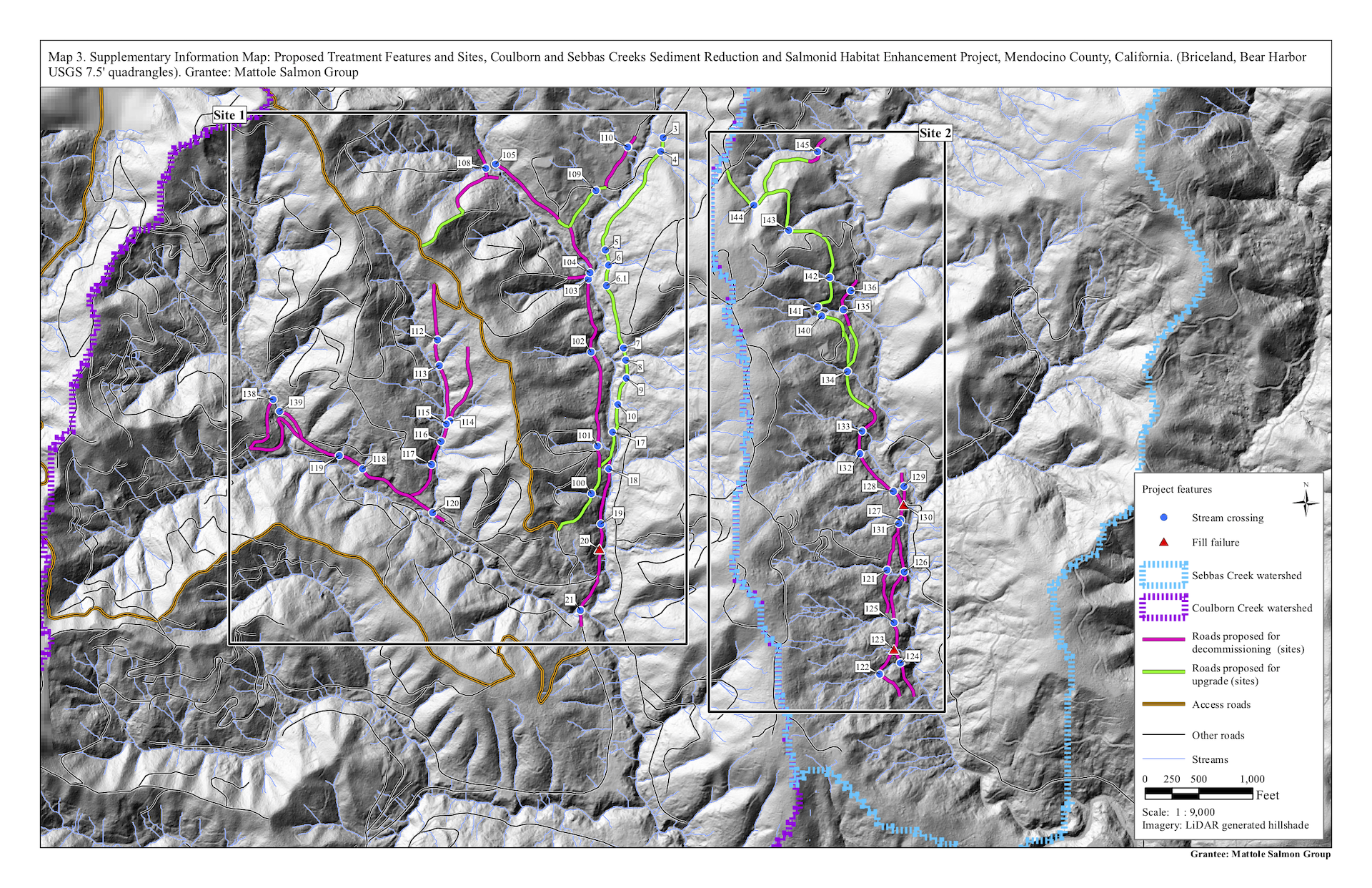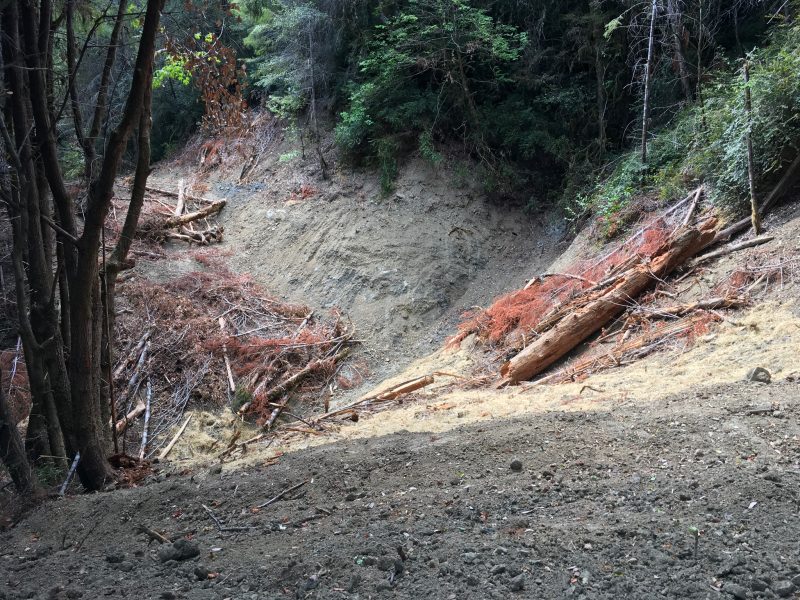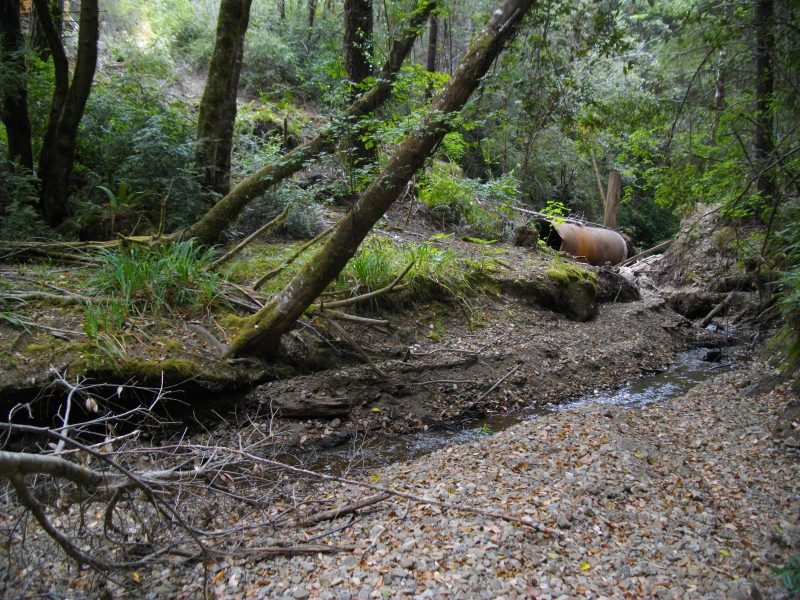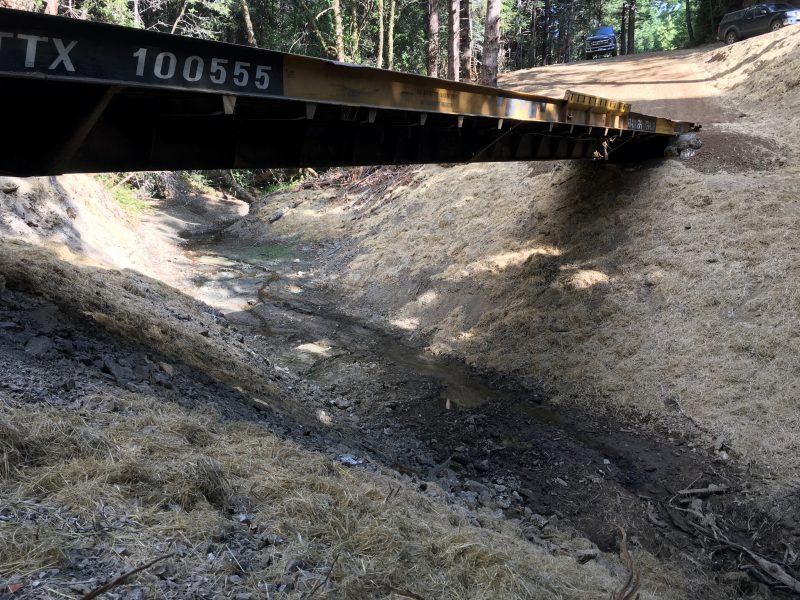Reducing Sediment and Improving Salmonid Habitat in Coulborn and Sebbas Creeks

Funded by: the CDFW and Lost Coast Forestlands
Introduction
The Mattole Salmon Group, in collaboration with participating landowners, heavy equipment contractor McCullough Construction, the CDFW, Pacific Watershed Associates and Lost Coast Forestlands, recently completed a project designed to reduce sediment delivery and improve salmonid habitat in Coulborn and Sebbas Creeks, located in the Middle South Fork Eel watershed, approximately 7 miles upstream of the confluence of Indian Creek and South Fork Eel River.
The objective of the project is to reduce sediment delivery and improve water quality for all life stages of salmonids in Indian Creek by preventing the delivery of approximately 5,129 yd3 of sediment from road-related sediment delivery features to Coulborn and Sebbas Creeks including, upgrading 17 features on 1.9 miles of road and decommissioning 38 features on 3.5 miles of road (a total of 55 features on 5.4 miles of road).
Completion of the project included installing culverts at stream crossings, planting trees along stream channels, applying straw mulch and rock to control erosion, and spreading native grass seed to re-plant bare earth surfaces.
Background
Anecdotal information provided by Scott Downie (CDFW, retired), local foresters with historical knowledge, and several sources of unpublished literature, indicate that instream habitat in the Indian Creek tributaries became degraded primarily in the 1950s to 1980s as a result of unrestricted logging, tractor yarding, and road construction practices. Many of the Indian Creek watershed tributaries were filled with logging debris and sediment, and were used as skid trails and railroad routes during the first and second cycles of logging, the remnants of which can still be observed today. In the 1970s these watersheds were further subjected to stream clearing, which resulted in the removal of significant volumes of Large Woody Debris (LWD). The legacy effect of all of these deleterious activities is clearly identified in each stream inventory report and is manifested as chronic fine sediment delivery from the road system, episodic catastrophic failure of stream crossings, a diminished pool frequency and cover, significant bank erosion along stream channels, locally dysfunctional or poorly functioning riparian habitat, and high values of substrate embeddedness.
Implementation

Heavy equipment and labor subcontractor, McCullough Construction, a highly skilled and well qualified heavy equipment contractor, provided all the necessary heavy equipment, experienced operators, and skilled laborers required to complete the project as designed. This included but may not be limited to the excavation of stream crossing fills, unstable road fills, road drainage treatments, and installation of instream structures using a team of hydraulic excavators, bulldozers, and dump trucks. In addition, laborers were used to spread straw and mulch, man and monitor pumps during necessary dewatering operations, maintain and monitor equipment, and work on in-stream habitat improvement structures. Laborers will also conduct tree planting this winter as the final phase of implementation.

Washed-out Class I stream with the remnant culvert blocking the stream channel and preventing juvenile fish passage 
Upgraded site with a bridge after the channel has been restored and reconfigured for fish passage, including all life stages of fish year round.
